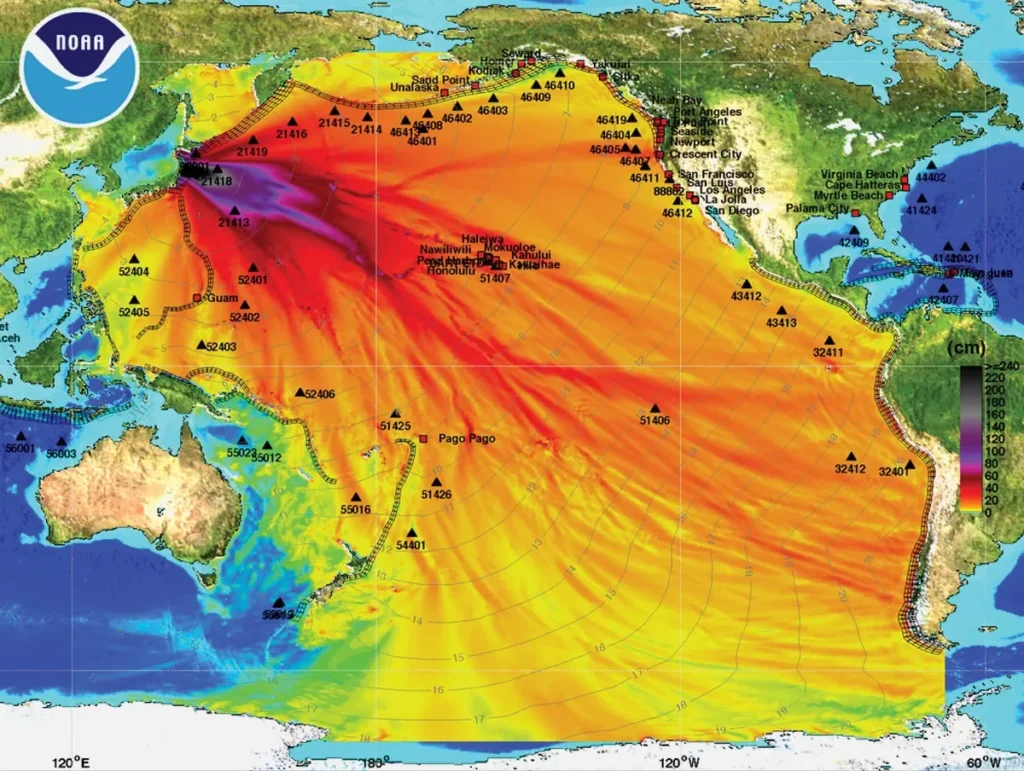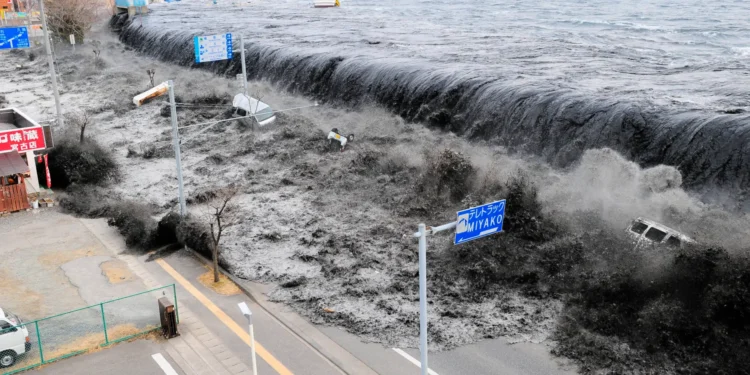No products in the cart.
Tsunami in Japan: How to Stay Safe When Disaster Strikes
Introduction
Japan is one of the most tsunami-prone countries in the world. Located along the Pacific “Ring of Fire,” the country experiences frequent earthquakes, and some of them trigger powerful waves that can reach coastal cities within minutes. A tsunami in Japan can cause devastating damage, flooding entire neighborhoods, destroying infrastructure, and endangering thousands of lives. That’s why knowing what to do before, during, and after such an event is critical.
This guide explains step-by-step actions to take if a tsunami comes to your city in Japan, so you can protect yourself, your family, and others around you.
1. Understand the Risk of a Tsunami in Japan
Japan has a long history of deadly tsunamis. From the Great East Japan Earthquake in 2011 to smaller but still dangerous events, the country has faced repeated reminders of nature’s power. Cities along the Pacific coast—such as Sendai, Shizuoka, and Kochi—are particularly vulnerable. But even places you might not expect can be at risk, especially if they are near rivers that connect to the ocean.
Knowing whether you live or work in a tsunami hazard zone is the first step. Local governments publish hazard maps that show safe evacuation areas and potential flood zones. Study these maps and memorize your nearest evacuation points.
2. React Immediately to Natural Warnings
If you feel a strong earthquake that lasts more than 20 seconds, or if the shaking makes it difficult to stand, treat it as a potential tsunami warning. In Japan, such earthquakes are often the first sign that a tsunami may be on the way.
Other natural warning signs include:
- Rapidly receding water along the coast.
- A loud roaring sound from the sea.
- Unusual behavior from animals (such as birds flying inland).
If you notice any of these signs, don’t wait for an official announcement—start evacuating immediately. A tsunami in Japan can arrive in as little as a few minutes after the quake.
3. Follow Official Alerts and Warnings
Japan’s Meteorological Agency (JMA) issues tsunami advisories, warnings, and major warnings. These alerts are broadcast on TV, radio, smartphones, and loudspeakers in coastal areas.
The categories are:
- Tsunami Advisory: Smaller waves are expected. Stay away from the coast and rivers.
- Tsunami Warning: Larger, dangerous waves are expected. Immediate evacuation is necessary.
- Major Tsunami Warning: Extremely large waves are expected. This is life-threatening—head to the highest ground possible.
Even if the initial earthquake didn’t feel strong in your area, always take these alerts seriously. Past disasters have shown that ignoring warnings can be fatal.
4. Evacuate to Higher Ground Without Delay
If there is a tsunami warning in your city, your priority is to get to a safe place—fast. Move inland and uphill, aiming for areas at least 30 meters above sea level or as high as possible. If your area is flat, head for reinforced concrete buildings of three stories or higher, and climb to the roof.
Do not use cars unless absolutely necessary, as roads can quickly become jammed. Walking or running is often faster. Many coastal cities in Japan have “tsunami evacuation towers” specifically built for quick refuge—know where they are before disaster strikes.

5. Stay Away from Rivers and Coastal Areas
A tsunami in Japan can travel up rivers and flood inland areas far from the sea. Even if you’re several kilometers away from the coastline, the danger remains. Avoid bridges, riverbanks, and any low-lying coastal zones.
Do not return to the shore to watch the waves. Tsunamis often arrive in multiple surges, with the largest wave coming later. Many victims in past disasters lost their lives because they went back too soon, thinking the danger was over.
6. Prepare a “Go Bag” in Advance
Preparation can save your life during a tsunami in Japan. Keep an emergency bag ready at home, work, or school. Include:
- Bottled water and emergency food.
- A flashlight and spare batteries.
- A first-aid kit and any essential medicines.
- A portable phone charger.
- Important documents in waterproof bags.
- A whistle to signal for help.
If you have pets, prepare a small emergency kit for them as well.
7. Help Others If You Can
During a tsunami evacuation, panic and confusion are common. If you are able, assist the elderly, children, or people with disabilities. In many coastal areas of Japan, neighbors look out for one another, and mutual aid can make the difference between life and death.
However, do not put yourself in unnecessary danger—always keep your own safety as the priority.
8. After the Tsunami, Stay Alert
Once the water recedes, the danger is not necessarily over. A tsunami in Japan can cause multiple waves over several hours. Authorities may advise you to stay in evacuation centers until it is safe to return home.
When you do go back, be cautious:
- Floodwaters can hide sharp debris or deep holes.
- Buildings may be unstable.
- Gas leaks and electrical hazards may be present.
Listen to official updates and only return when given the all-clear.
9. Learn from Past Tsunamis
Japan’s history offers important lessons for survival. For example, after the 1896 Sanriku tsunami, many communities started building stone monuments warning future generations never to build homes below certain elevations. Unfortunately, some of these warnings were forgotten over time, and rebuilding in low areas led to repeated losses.
By respecting historical knowledge and heeding modern hazard maps, you can reduce the risk of tragedy.
10. Practice Evacuation Drills
Many cities in Japan hold tsunami evacuation drills, especially in coastal prefectures. Participate in these drills to learn the fastest evacuation routes, safe gathering points, and emergency communication methods. Practicing ahead of time means you can react more quickly and calmly when a real tsunami in Japan occurs.
Final Thoughts
A tsunami in Japan is a serious and sudden threat. While technology and warning systems have improved greatly, your own awareness and quick action are the best defenses.
Remember:
- Know if you live in a hazard zone.
- React immediately to strong earthquakes or unusual sea behavior.
- Follow official tsunami warnings without hesitation.
- Head to higher ground as fast as possible.
- Stay alert even after the first wave.
Nature’s power cannot be stopped, but with preparation and knowledge, you can greatly improve your chances of survival. In Japan, where the beauty of the sea comes with the risk of tsunamis, respecting that power is part of living safely.










